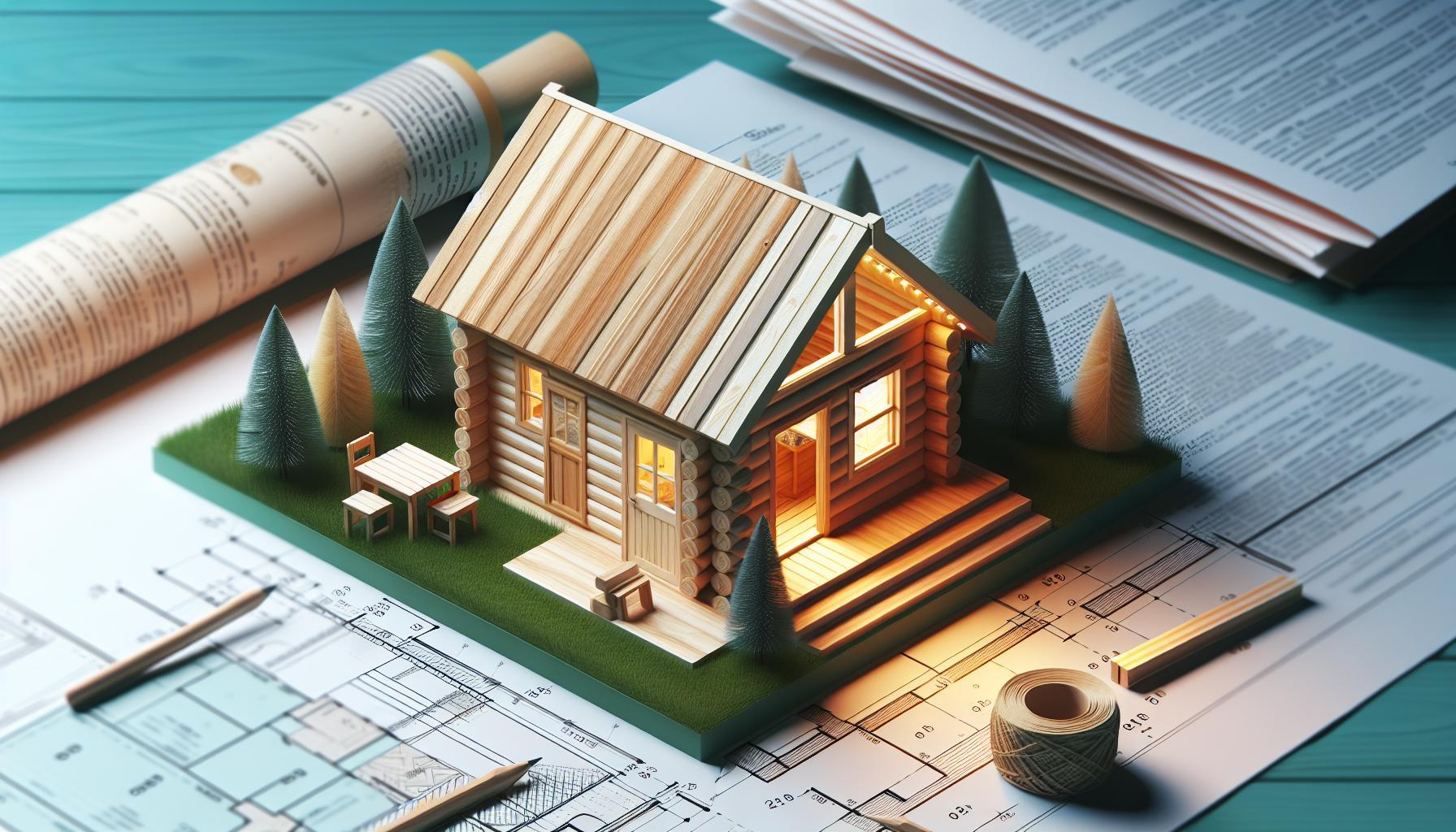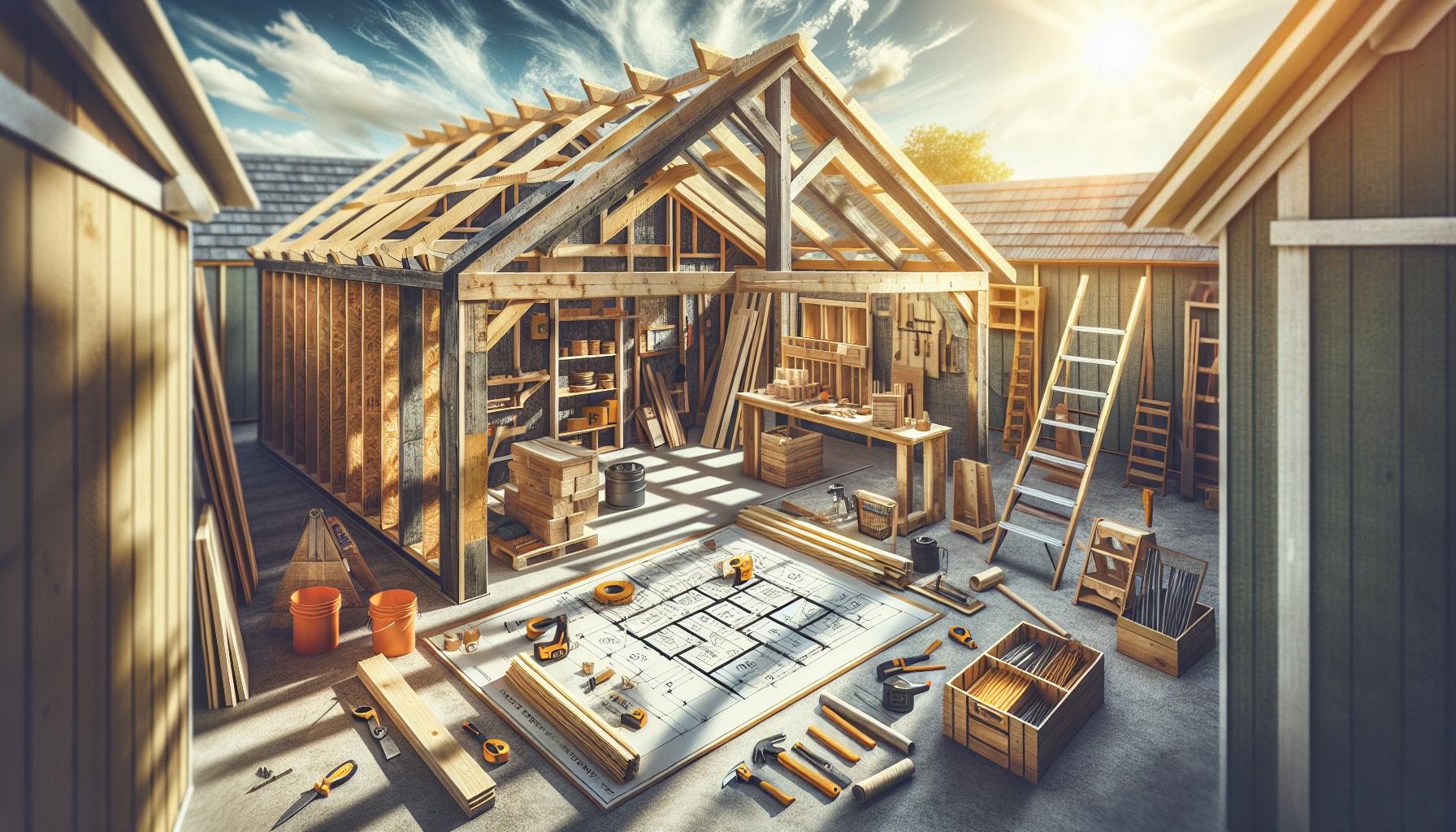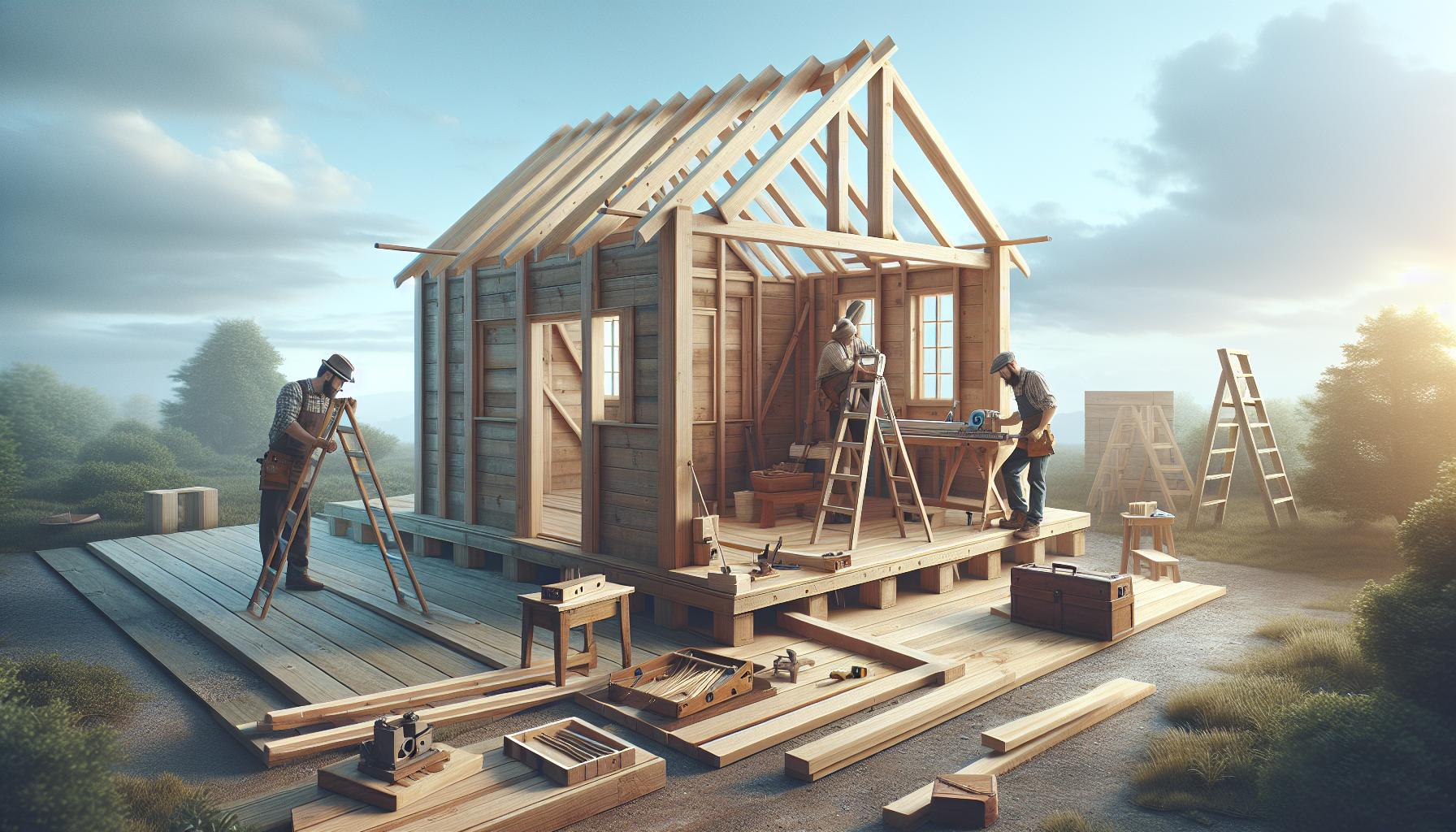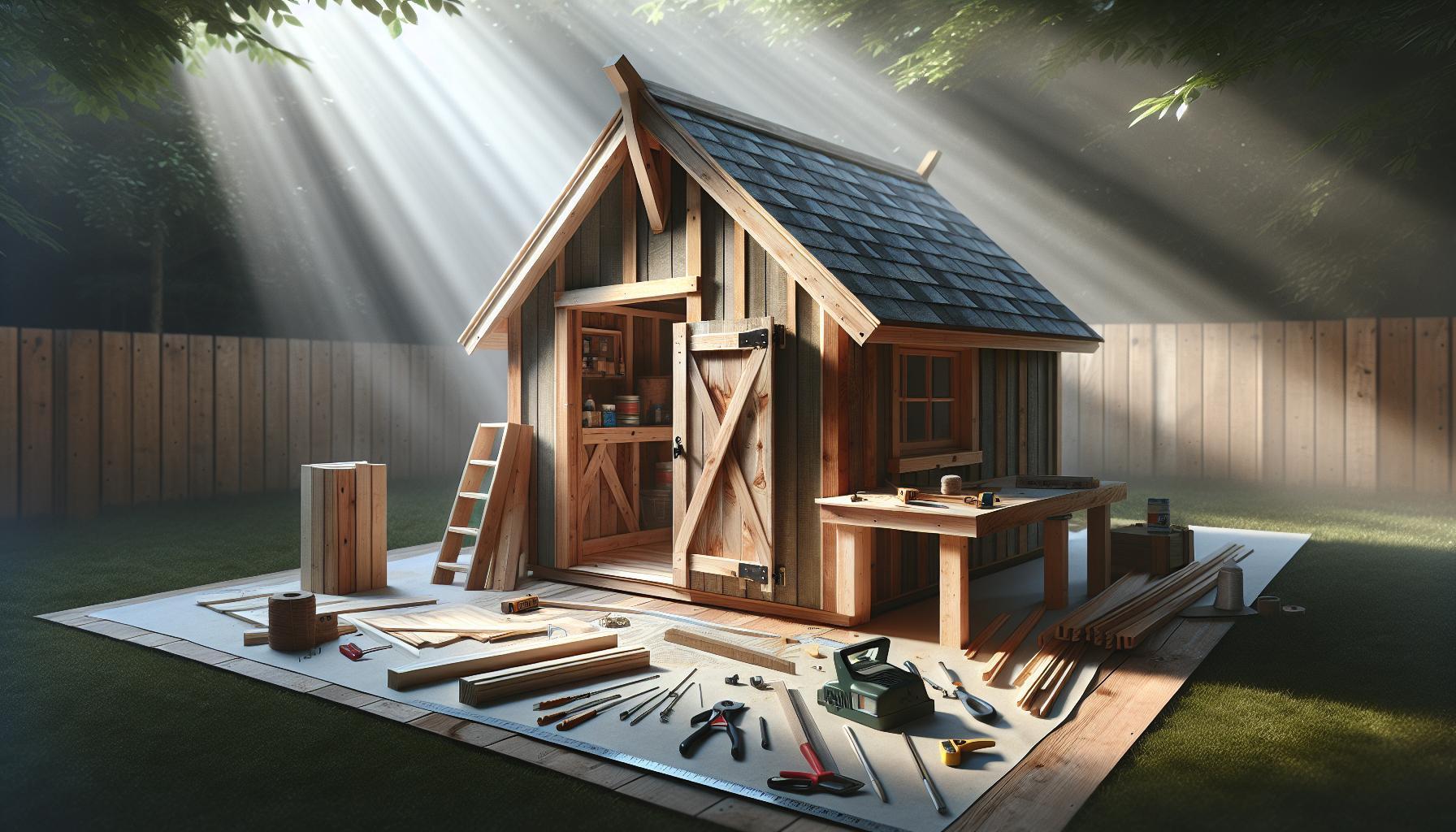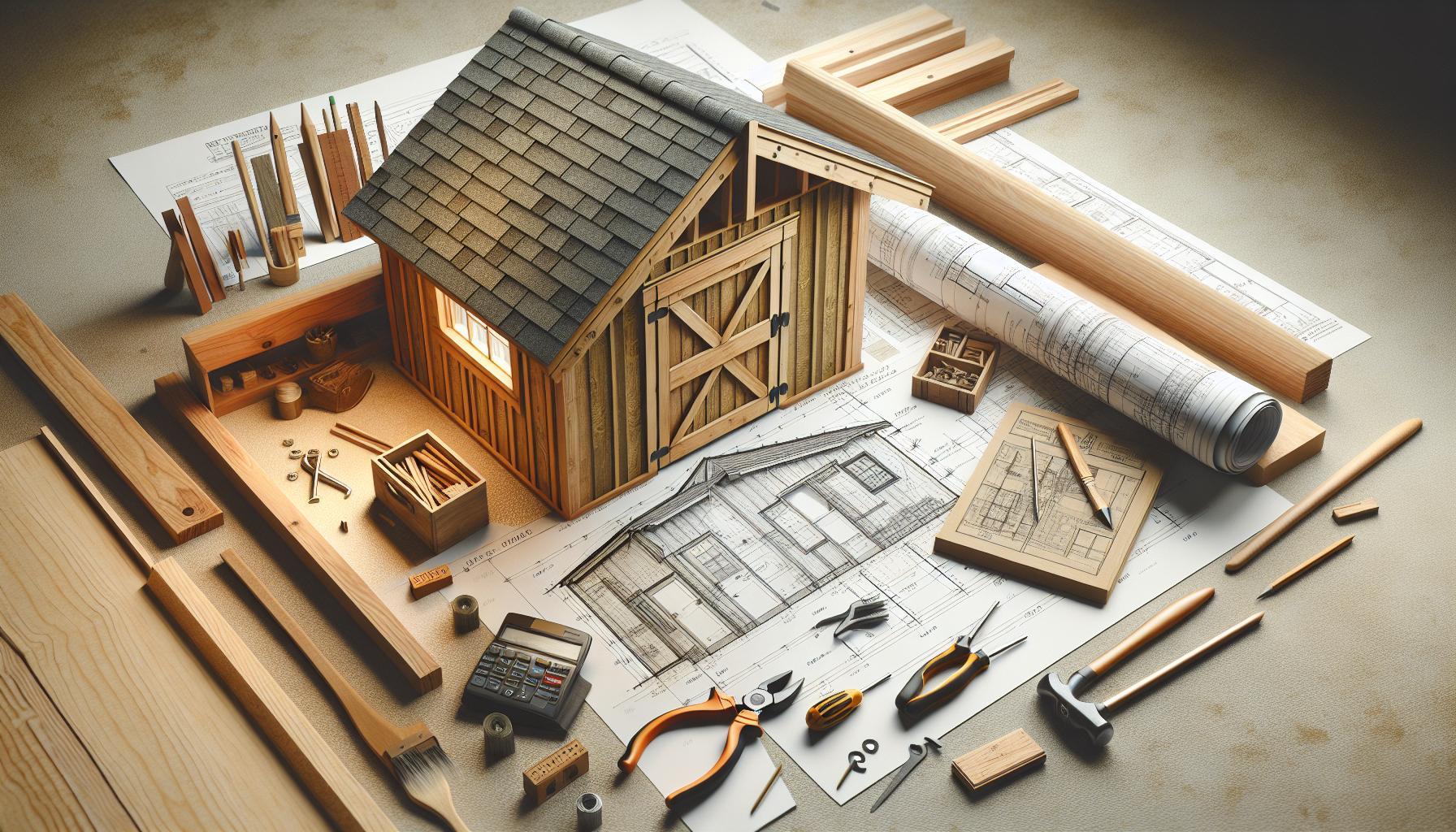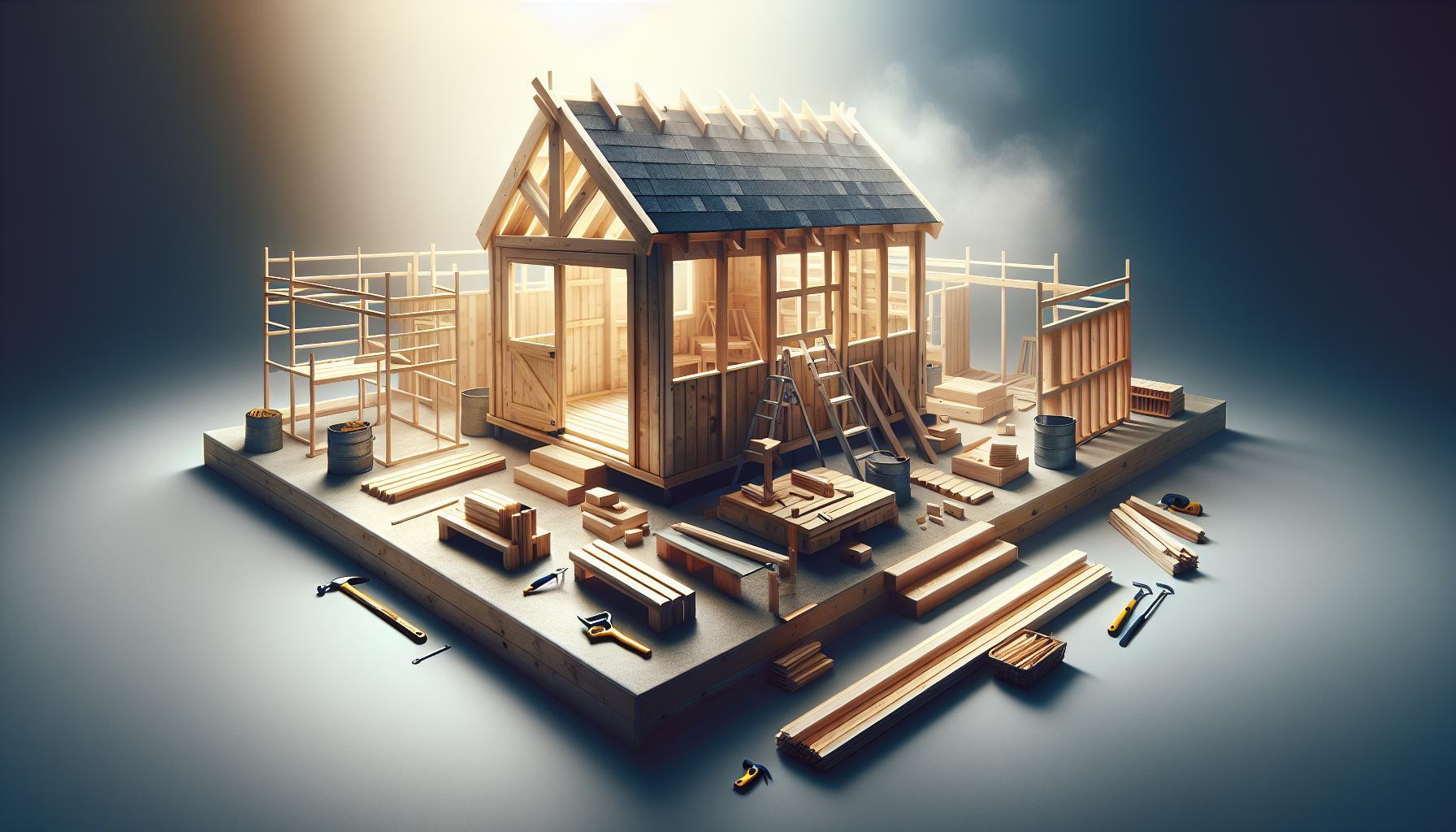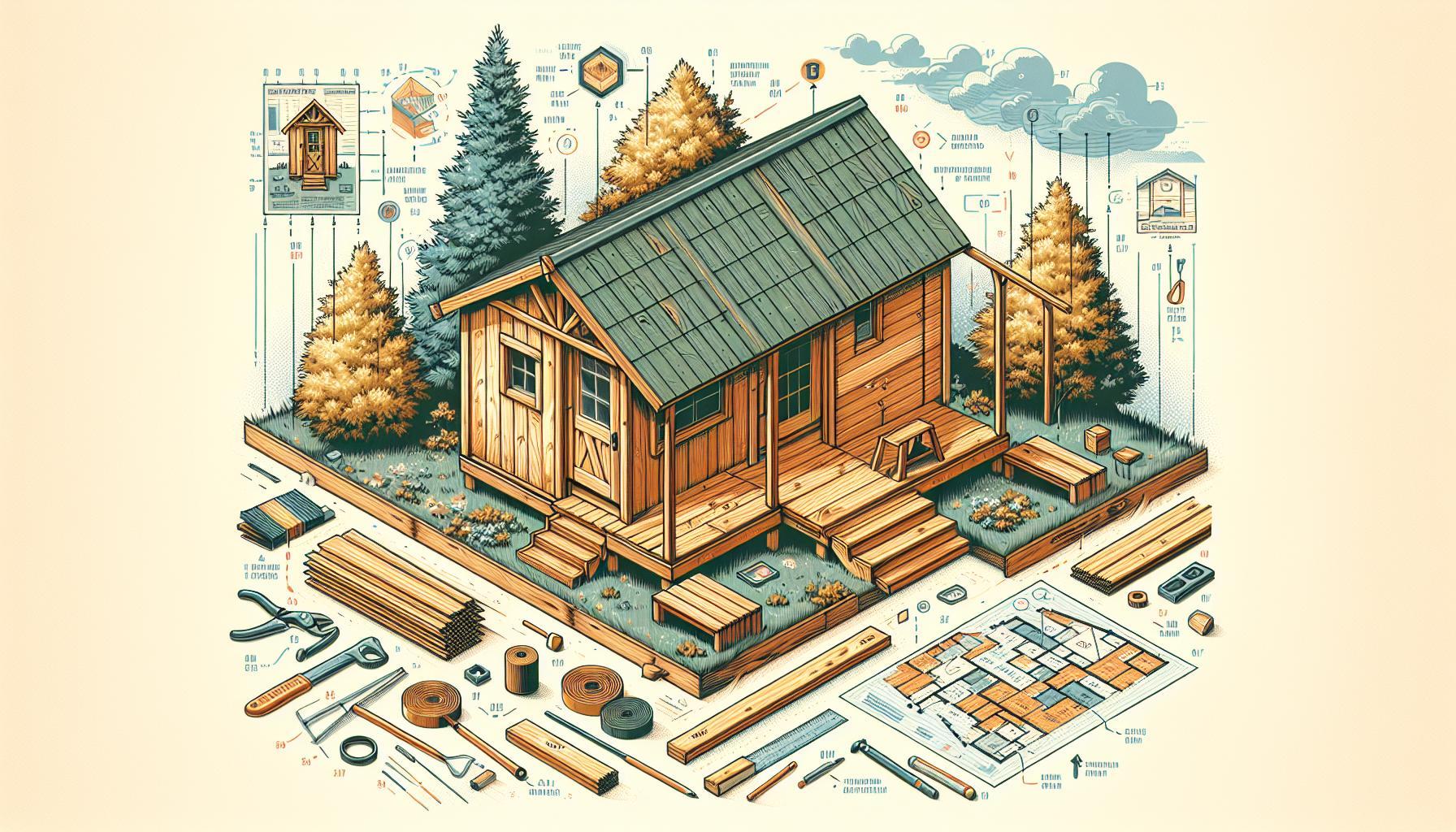Considering adding a shed to your yard? One of the most pressing questions homeowners face is how close they can build to property lines without violating local regulations. Understanding these legal guidelines is crucial to avoid costly disputes with neighbors and potential fines, ensuring your outdoor space is both functional and compliant.
Understanding Setback Requirements: What Do Local Laws say?
Understanding the regulations surrounding property line setbacks is essential for anyone considering constructing a shed or any structure on their property. Setbacks define the minimum distance a building must be from property lines and are influenced by local laws designed to protect safety, privacy, and the overall aesthetics of a neighborhood. Navigating these laws can help you avoid costly fines or the need to relocate or modify your shed later in the process.
Local jurisdictions determine specific setback requirements based on various factors, including property type, location, and zoning laws. Typically, setbacks are categorized into three main types: front, side, and rear yard setbacks. each type serves a distinct purpose—front setbacks keep structures at a uniform distance from the street, ensuring a cohesive streetscape; side yard setbacks maintain sufficient space between neighboring properties to promote privacy; while rear yard setbacks preserve personal outdoor space. In general, residential properties may require:
| Type of Setback | Typical Distance |
|---|---|
| Front Yard Setback | 20-30 feet |
| Side Yard Setback | 5-10 feet |
| Rear Yard Setback | 10-20 feet |
When considering “How Close to Property Line Can I Build a Shed? Legal Guidelines,” it’s vital to consult your local building department or zoning office. They can provide the most accurate details regarding specific setback measurements for your area. Additionally, reviewing local zoning codes can help you ensure that your planned shed complies with legal parameters. Failure to adhere to these guidelines could not only lead to fines but may also result in the need for removal or restructuring of the built shed, which can be both time-consuming and financially burdensome. Always check if you need to apply for a permit, even for smaller structures, as this can also affect your construction timelines.
By understanding and adhering to setback requirements, you can ensure that your new shed is not only functional but also compliant with local regulations, ultimately protecting your investment and contributing positively to your neighborhood.
Assessing Property Boundaries: How to Accurately Measure Your Space
Understanding the precise boundaries of your property is crucial, especially when considering any construction projects like a shed. Accurate measurements help prevent disputes with neighbors and ensure compliance with local zoning laws. Whether you’re planning a cozy storage area or a large workshop, knowing how close to the property line you can build is essential to avoid legal issues down the road.
to begin measuring your space accurately, consider these practical steps:
1. Gather Your Tools
Before starting, make sure you have the necessary tools on hand:
- Tape Measure: A long, durable tape can help measure distances accurately.
- Marker: Use stakes or flags to mark important points.
- Property Deed: This document will outline legal property boundaries.
2. Locate Your Property Lines
Start by consulting your property deed, which will provide exact boundaries. You may also benefit from hiring a professional surveyor, especially if locating specific corners proves challenging. Here are some methods you can use to identify your property lines:
- Check Local records: Your local assessor’s office can offer maps and documents that detail property lines.
- Talk to Neighbors: They may have insights or previous survey information.
- Use Online Mapping Tools: Websites such as GIS mapping services can definitely help visualize boundaries.
3. Measure Your Space
Once boundaries are established, use your tape measure to determine how far the proposed structure will sit from property lines. Keep local zoning regulations in mind: some areas enforce minimum distance requirements between your shed and the boundary. It’s essential to document all measurements accurately, clearing a buffer zone to avoid unintentional encroachment.
In many jurisdictions, determining how close to the property line you can build a shed is nuanced. Local building codes will typically provide a distance that must be maintained, often ranging from 3 to 10 feet. Always check with your local zoning department before proceeding to confirm your measurements comply with legal guidelines.
by following these steps and ensuring your measurements are precise, you can take a significant first step toward a prosperous and compliant shed installation. This not only enhances your property but also ensures peace of mind regarding disputes with neighbors or potential legal challenges.
The Importance of Zoning Regulations in Shed Construction
Understanding the nuances of zoning regulations is crucial when considering setbacks and property lines in shed construction. These regulations dictate how close any structure can be erected to your property boundaries, ensuring that not only your interests are safeguarded but also those of your neighbors. By adhering to zoning laws, property owners can avoid potential disputes and legal complications that may arise from non-compliance.
Compliance with zoning regulations when building a shed involves several factors that vary by locale, including the type of zone you are in—residential, commercial, or agricultural—and the specific rules governing setbacks, height restrictions, and lot coverage. For example, in many residential areas, the standard requirement is that structures must be set back a minimum of 10 to 20 feet from the property line.Ignoring such guidelines could lead to fines, or worse, the potential need to remove the shed entirely. It’s essential to consult your local zoning ordinance or engage with your municipality’s planning department to clarify these details before proceeding.
practical Steps for Compliance
To navigate the complexities of zoning laws effectively, consider these actionable steps:
- Check Local Zoning Laws: Start by reviewing your local zoning regulations, which can often be found on municipal websites or through city halls.
- Obtain Necessary Permits: In many jurisdictions, building permits are required for sheds over a certain size. Secure any necessary approvals before construction begins.
- Consult with Neighbors: open communication with neighbors about your plans can definitely help mitigate potential objections and foster a more cooperative community habitat.
- Document Everything: Keep thorough records of your communications and any permits or approvals received, as these could be vital should disputes arise.
By understanding and respecting zoning regulations regarding compliance with property lines, you not only protect your investment but also contribute to the orderly development and aesthetic appeal of your neighborhood. Prioritizing these legal guidelines, as outlined in the discourse on “How Close to Property Line can I Build a Shed? Legal Guidelines,” will aid in ensuring a smooth construction process and enhance harmony within your community.
Navigating HOA rules: Do You Need Approval for Your Shed?
Building a shed can be an exciting way to add functional space to your property, but it’s essential to navigate the labyrinth of Homeowners Association (HOA) rules before breaking ground. Many people are surprised to learn that even seemingly minor structures often require prior approval to ensure compliance with local regulations and community aesthetics.This necessity arises from the fact that HOAs are empowered to uphold specific standards within neighborhoods, which can include strict guidelines regarding placement, appearance, and more.
Understanding HOA Approval Requirements
Gaining approval from your HOA for shed installations typically hinges on several factors, including:
- Size and Height: Most HOAs have restrictions on how large your shed can be and its height, frequently enough defined in relation to your home.
- Placement: There are usually specific rules dictating how close to your property line you can build. This regulation helps retain uniformity and avoids potential disputes with neighbors.
- materials and Aesthetics: Many HOAs want structures to complement the overall look of the neighborhood, dictating materials and colors to maintain visual harmony.
Before you start your project, it’s crucial to review your HOA’s guidelines. They may require submission of detailed plans, including location, design, and intended use. This process might also need a formal meeting or a vote, notably in larger associations.
Practical Steps to Obtaining Approval
Navigating the approval process efficiently can save you time and frustration. Here are some actionable steps to follow:
- Review HOA Guidelines: Obtain and thoroughly read through your HOA’s governing documents to understand their specific rules about structures like sheds.
- Draft Your Proposal: Create a clear proposal including your shed’s dimensions, the site plan showing the proposed location, and any design elements that demonstrate compliance with HOA standards.
- Submit for Approval: Follow your HOA’s submission process—this could involve submitting your plans via a web portal, mailing them, or presenting them in-person during a meeting.
- Await Decision: After submission, you may need to wait for the HOA board to review and respond, which can take anywhere from a couple of days to several weeks.
Real-World Example: Shed Approval Case
consider a homeowner who lived in a suburban community governed by an HOA that required approval for any new structures. They desired a 10×12-foot shed to store gardening tools and equipment. By researching the guidelines and submitting sketches that adhered to community style, they not only received approval but also engaged their neighbors in the process, which fostered goodwill and avoided potential disputes.
Understanding “How close to Property Line Can I Build a Shed? Legal Guidelines” is critical, but the approval process dictated by your HOA is equally essential.Adhering to these rules not only keeps you compliant but also safeguards the spirit of community living.
Exceptions to the Rules: Understanding Variances and Special Permits
While property line regulations are often strictly enforced, there are instances where homeowners may find themselves exceptions to these rules. Understanding the intricacies of variances and special permits can empower you to effectively navigate the complexities associated with shed construction. When deciding on “how close to property line can I build a shed?”, it’s vital to grasp that local zoning laws may allow for flexibility under certain conditions.
what Are Variances?
A variance is essentially a form of legal permission that allows a property owner to deviate from specific zoning regulations. It’s typically sought when compliance would impose undue hardship or practical difficulties.Homeowners looking to build a shed closer to their property line than the regulations allow can file for a variance by following these general steps:
- Research Local Regulations: Familiarize yourself with your area’s zoning laws and understand the reasons behind them.
- Justify Your Request: You will need to demonstrate how the proposed location of your shed meets the criteria for hardship. This may include physical site limitations or existing structures.
- Submit an Application: Complete the necessary paperwork and pay any required fees to submit your variance request to the local zoning board or planning commission.
- Attend a Hearing: prepare to present your case before a zoning board. This is an opportunity to explain why the variance should be granted.
Understanding Special Permits
In contrast to variances, special permits are generally used for uses or structures not typically allowed in a zoning district but could be permitted under certain circumstances. As a notable example, if your desired shed serves a secondary function that doesn’t align perfectly with zoning requirements, applying for a special permit might potentially be a viable alternative. The process usually entails:
- Document Your Intent: Clearly outline the purpose of your shed and how it aligns with community goals.
- Show Compatibility: Ensure that the proposed shed will not pose a nuisance or negatively impact surrounding properties.
- Community Engagement: Some jurisdictions require public notification, so it’s wise to discuss your plans with neighbors and gauge their support.
Comparing Variances and Special Permits
A brief comparison of variances and special permits may help clarify which path is more appropriate for your shed construction purpose:
| Aspect | Variance | Special Permit |
|---|---|---|
| Purpose | Deviate from zoning regulations | Allow specific uses not generally permitted |
| Application Complexity | Generally straightforward | May involve more community input |
| Common Use Cases | Sheds built closer to property lines | Structures with secondary functions |
By understanding the distinct processes and qualifications for variances and special permits, homeowners can enhance their chances of developing their outdoor spaces while adhering to legal guidelines regarding shed construction. Ultimately, knowlege of these exceptions can provide solutions that allow you to maximize your property’s potential even within the constraints of local regulations.
Choosing the Right Shed Location: Factors Beyond Legal Guidelines
when planning to install a shed on your property, there’s more to consider than the legal guidelines regarding proximity to property lines. while knowing the regulations is crucial, the success of your shed project largely hinges on suitable placement. A thoughtfully chosen spot can enhance functionality, improve accessibility, and even elevate the aesthetic appeal of your yard. Here are some critical factors to consider beyond just “how close to the property line can I build a shed?”
1. Sunlight Exposure
Positioning your shed in the right location can make a world of difference in terms of natural light. For gardeners or those who like to work outside, maximizing sunlight can be essential, especially if you plan to use your shed for potting plants or other outdoor activities.
- Morning Sun: If you prefer to utilize your shed during the day, consider placing it where it will receive ample morning sunlight. This not only brightens the space but also helps to warm it up, making it usable even in cooler weather.
- Shade Considerations: Alternatively,if you’re storing sensitive equipment or materials that could be affected by heat,placing your shed under the shade of existing trees can be beneficial.
2. Drainage and Soil Quality
The ground where your shed will sit plays a significant role in its longevity and usability. Proper drainage is vital to prevent water damage, while the soil quality under the shed can affect stability.
- Flood Zones: Avoid low-lying areas that may collect water after heavy rain. Building in a flood-prone area could jeopardize your structure and increase the risk of damage.
- Soil Type: Sandy or loamy soil is ideal for support, while clay may retain too much water and compromise your shed’s foundation over time.
3. Accessibility and Functionality
Consideration of how you plan to use your shed is paramount in choosing its location.Do you need easy access to move larger items in and out? Is it going to serve as a workspace?
| Activity | Ideal location |
|---|---|
| Garden Tool Storage | Close to garden or backyard |
| Workshop | Near existing power supply and accessible location |
| Outdoor Gatherings | Central location in the yard for easy access |
4. Aesthetic Integration
Lastly, think about how your shed will fit into the overall design of your yard. A well-placed shed can become a stylish element of your property rather than a mere storage unit. Matching the shed’s design to your home’s exterior, considering landscaping, and visibility from different parts of your yard can definitely help in creating a cohesive look.
beyond the legal guidelines for distance from property lines, selecting the right location for your shed is contingent upon thoughtful planning. Take into account sunlight exposure,drainage,accessibility,and aesthetic considerations to ensure your shed serves its purpose effectively and enhances your outdoor space.
Common Mistakes to Avoid When Building Near Property Lines
Building near property lines can be a tricky venture. even a small misstep can lead to disputes with neighbors or costly legal issues. Understanding the guidelines surrounding property boundaries,especially when considering the construction of a shed,is crucial. Here are some common pitfalls to watch out for when you plan to erect a structure close to your property line.
Neglecting local Zoning laws
One of the most frequent mistakes people make when building a shed is failing to check local zoning regulations. Each municipality has specific rules regarding how close you can build to your property line, which can considerably affect your project. always consult your local zoning office or their website for up-to-date information. Additionally:
- Setback Requirements: Familiarize yourself with the exact setback requirements for your area.
- Permitting: Determine if you need a permit for your shed construction.
- Usage Restrictions: Ensure that your intended use for the shed complies with local laws.
Ignoring neighbour Relations
Another common error is overlooking the importance of neighbor relations. Building near a property line can lead to tension or disputes if not handled considerately. Consider these strategies to maintain good relationships:
- Communicate Early: Inform your neighbors about your building plans well in advance.
- Seek input: Encourage feedback, which may help alleviate concerns.
- Share Plans: Present your design and placement for transparency and trust.
Disregarding Property Surveys
Many homeowners make the mistake of assuming they know where their property lines are without obtaining an accurate survey. This can lead to unintentional encroachments. Here’s what you should consider:
| Action | Description |
|---|---|
| Hire a Professional Surveyor | A professional can precisely locate your property lines. |
| Review Existing Documents | Check any existing surveys or property deeds that define boundaries. |
| Mark Property Lines | Use stakes or flags to visually indicate where your boundaries lie before building. |
Underestimating Consequences
Lastly, many builders downplay the potential repercussions of violating property line regulations.Failing to build within legal limits can have serious implications:
- Removal Orders: Local authorities may require the removal of your shed if it encroaches on a neighbor’s property.
- Legal Disputes: Neighbors may pursue legal action if they feel their property is encroached upon.
- Financial Loss: Costs can add up, not just in construction but also in litigation and potential fines.
Being aware of these mistakes and taking proactive steps can help ensure that your shed is not only compliant with the question of “How close to property line can I build a shed?” but also a welcome addition to your outdoor space.
Best Practices for Building a Shed That Compliments Your Property
A well-constructed shed can enhance the beauty of your property while providing practical utility.However, its placement requires careful consideration to ensure both visual appeal and compliance with local regulations. Understanding how close you can build a shed to your property line is essential not just for adhering to legal guidelines, but also for creating a harmonious relationship between your shed and your home landscape.
Design with Purpose
When planning your shed, consider how it will blend with your existing structures and outdoor aesthetics. Here are some tips to create a cohesive look:
- Match Materials: Use siding, roofing, and paint colors that complement your home. As an example, if your house features cedar shingles, try incorporating the same texture and color in your shed.
- Size Matters: Ensure the shed’s dimensions are proportionate to your property size and other structures. A bulky shed may overwhelm a small yard, while a diminutive one might look lost in a spacious landscape.
- Landscaping: Surround your shed with native plants, flowers, or shrubs to integrate it into your outdoor environment seamlessly, enhancing both its functionality and aesthetic appeal.
Understand Local Regulations
Before proceeding with construction, familiarize yourself with local zoning laws regarding shed placement. Many jurisdictions have specific regulations detailing how close to the property line you can build a shed, which can vary significantly. A typical scenario includes restrictions that might allow sheds to be placed anywhere from 3 to 10 feet away from property lines.
Here’s a simplified overview of common zoning practices:
| Property Type | Minimum Setback Distance |
|---|---|
| Residential | 5-10 feet |
| Agricultural | 10-15 feet |
| Commercial | 15-20 feet |
Plan for Accessibility
In addition to building regulations, think about how you will access your shed and the areas surrounding it. Ensure there is adequate space for lawn maintenance, such as mowing and trimming. This leads to functional design—practical placement will allow easy entry while maintaining a tidy exterior, ultimately elevating your property value.
Incorporating these best practices not only helps in adhering to the legal guidelines surrounding shed proximity to property lines but also ensures that your new addition augments the charm and functionality of your outdoor space.
Frequently asked questions
How Close to Property Line can I Build a Shed? Legal Guidelines?
Typically, the distance you can build your shed from the property line varies by municipality. Many areas require a setback of at least 5 to 10 feet. Always check local building codes for specific regulations that apply to your property and location.
Local regulations for building a shed near property lines can differ significantly based on where you live. For example, in some areas, you might potentially be permitted to build closer to the property line if the structure is smaller than a certain size, such as 120 square feet.Understanding these specific guidelines can save you from potential fines or the necessity to relocate your shed later.
What is a property line, and why is it significant for building a shed?
A property line is the legal boundary separating your land from neighboring properties. It is essential to adhere to these boundaries to avoid encroachment and potential disputes with neighbors.
encroaching on a neighbor’s property can lead to legal issues, including the removal of your shed. Understanding property line regulations helps maintain good neighborly relations and ensures your shed complies with local zoning laws. It’s smart to get a land survey if you’re unsure of your property boundaries.
Can I build a shed on my property line?
Generally,you cannot build a shed directly on your property line. Most places require a specific distance to protect property rights and maintain neighborhood aesthetics.
In some cases, you may seek a variance from local zoning officials allowing you to build closer to the property line.Though, this process can be complex and challenging. It’s better to plan your shed location with the required setbacks to avoid unnecessary complications.for further assistance, consider consulting with a local zoning officer for clear regulations.
What are the common requirements for building a shed near a property line?
Common requirements typically include designated setback distances and building permit regulations. Additionally, you may need to ensure the shed aligns with local zoning laws and height restrictions.
Setback distances can vary by jurisdiction, often ranging from 5 to 15 feet. Besides setbacks, some areas may require sheds to be a certain height or have specific building materials. Researching your local zoning laws thoroughly will help ensure a smooth construction process. Local building departments often provide resources and guidelines for designing and permitting sheds.
do I need a permit to build a shed near my property line?
You frequently enough need a permit to build a shed,especially if it’s near your property line. Regulations vary, so it’s essential to verify with your local building authority.
Permits are typically required for larger sheds or those built within specified setbacks. If your construction plans involve considerable structures or utilities, it’s even more critical to obtain the necessary permissions. Avoiding this step can lead to costly fines down the road. For more details on permit processes, refer to your local building department’s website.
Why does the distance from the property line matter for shed construction?
The distance matters to maintain property rights, ensure safety, and avoid disputes. Adhering to legal guidelines helps you avoid encroachment issues with your neighbors and protects your rights as a property owner.
Respecting property lines fosters positive relationships within your community. It also prevents practical issues, like shading or obstructing your neighbor’s yard or access to sunlight for their plants. Awareness of local laws allows you to construct your shed confidently, ensuring a well-planned project. For more solid tips, check our article on shed construction tips.
Final Thoughts
Navigating the nuances of shed placement can seem daunting, but with a clear understanding of legal guidelines and property line protocols, you’re well on your way to creating the perfect outdoor space. Remember,checking local zoning laws and obtaining the necessary permits are crucial steps in your planning process. Don’t let small setbacks deter you; whether it’s minimizing setbacks, managing neighborly relations, or ensuring compliance, you have the tools to make informed decisions.
Now that you’re equipped with the essential knowledge, why not take the next step? Explore your options, sketch out plans, and perhaps even consult with your local authorities to ensure you’re on the right track. With a little creativity and the right readiness, you can build a shed that not only complements your property but also enhances your lifestyle. Dive into your DIY shed project with confidence – your dream workspace is within reach!

